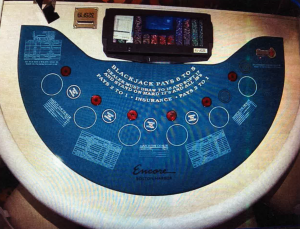Griffin's Theory of Blackjack includes what you need to create these hundreds of separate counting systems, but even that laborious task would not yield truly perfect play. The problem is that ANY card counting system based on effect of removal is an approximation to the real situations that arise during play. Last evening, I went to a casino that's new to me, about 90 minutes' drive away. Enjoyed the time, signed up for their player's club and got a free meal, played some BJ and got a reasonable profit for the time I allotted to it. Chatted a lot with the dealer and one of the PBs, tipped a bit. Return 1.5. bet else if dealer blackjack: return -bet // dealer wants to hit here if dealer should hit: expectedreturn = 0 for i from 1 to 10: probability = ( number of cards with value i ) / ( total number of cards ) if number of cards with value i 0: dealer hits remove 1 card of value i from deck expectedreturn = expectedreturn.
- Appendices
- Miscellaneous
- External Links
Introduction
The following menu is for tables that list the expected value for every initial hand in blackjack. The values in the table are 'composition dependent', meaning at every point the best decision was made according to the exact cards held in the players hand, as opposed to just the total points.
Dealer Peeks at Hole Card
All numbers in the following tables assume the dealer already peeked for blackjack, with a ten or ace up, and did not have it.

No Hole Card — Player Loses Everything if Dealer Gets a Blackjack
All numbers in the following tables assume no dealer hole card. If the dealer gets a blackjack, the player will lose everything bet, including on doubles and spltis.
Other sources for similar expected values:
- Blackjack Attack by Don Schlesinger
- Professional Blackjack by Stanford Wong.